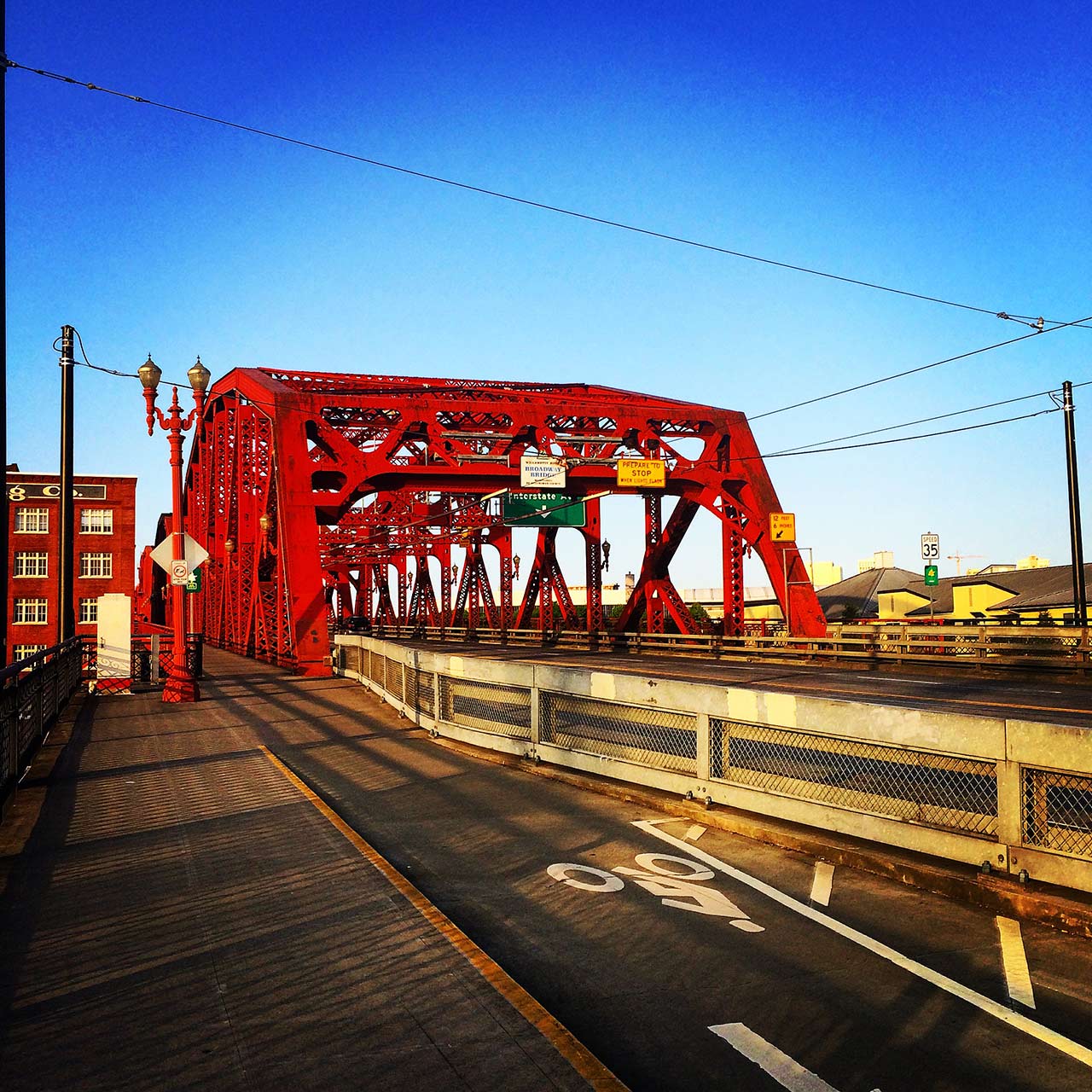
Engagement is essential to big changes in urban transportation

Portland photo by Elizabeth Tilis.
Shin-pei Tsay is director of research and development at TransitCenter. The following post is adapted from a blog post originally published on transitcenter.org. TransitCenter recently published the report “A People’s History of Recent Urban Transportation Innovation,” funded by Knight Foundation.
Congress may be consumed with yet another extension for the federal transportation program but progress to make our cities’ streets more livable and user-friendly continues apace at the local level. In just the first several months of this year, we’ve heard about the race to build the first physically protected bike lanes in Pittsburgh and Denver, the reinvention of the bus network in Houston, and new public plazas in other communities such as San Jose, Calif. More and more communities across the country are finding ways of advancing a change agenda that bends the arc towards more urban space for people, rather than for private vehicles.
Who are the people leading the charge in urban transportation? As our new report, “A People’s History of Recent Urban Transportation Innovation,” explains, the short answer is that it takes leaders from three different sectors of urban society to make change happen quickly.
First, there needs to be a robust civic vanguard, the more diverse their range of skills and participation, the better. These people, organizations such as Bike Pittsburgh, Sustain Charlotte and Transportation Alternatives in New York, are outside of government, non-elite, and are best able to make demands on government, and demonstrate the benefits of change. They are most able to usher in public support to backstop any negatives for the politicians that pursue risky change.
Second, mayors, commissioners and other city leaders need to create the mandate and champion the change. By doing so, they empower their staffs to take charge. City leaders unify the city around a transportation agenda that appeals to a broad constituency. They must also be cheerleaders and play the sometimes difficult role of mitigating any discomfort that the change may bring about, as Mayor Bill Peduto does today in Pittsburgh. (This is why it’s important for the civic sector to support these leaders).
The third sector is the agency staff. Often unsung heroes, these folks, once empowered by city leaders to pursue change, have to navigate longstanding bureaucratic practices and find new ways of getting things done. Sometimes the agency’s work is boosted by new staffers who bring new experiences from outside government, as Jon Orcutt did in New York as policy director of the New York City Department of Transportation. Other times, new design standards, such as those published by the National Association of City Transportation Officials, can facilitate the adoption of new practices.
When these three sectors align, relatively quick transformation is possible. Several cities, including New York and Pittsburgh, recently experienced this alignment of a healthy civic community, a visionary and bold mayor and transportation head, and internal agency champions. Our report also highlighted the potential of other cities, such as Charlotte, where the civic sector continues to build on and widen their base.
The story of Portland, Ore., also included in the report, taught us how change can stick. Its moment of alignment among all three sectors and its transformation came about in the early 1970s, yet it continued on a path that diverged from most other cities across the country and continues to do so today. Portland was significantly aided by state-level policies passed during the same period that continues to guide its local planning activities. Thus we learned that cities in states where state policies reinforced sustainable transportation goals and alignment experienced more durable change regardless of local shifts in power.
Above all, looking across all the cities detailed in our study and the many thousands more cities that have potential to change, the main lesson is that the biggest catalyst for change is local people advocating for change. This may seem obvious, but the transportation reform field can be consumed by abstract, wonky discussions, with a focus on financing and other broad mechanisms. Our study is intended to steel the will of those who share our vision for better cities and reinforce the understanding that without people bending the arc such change would never come about at all.
Recent Content
-
Community Impactarticle ·
-
Community Impactarticle ·
-
Community Impactarticle ·


